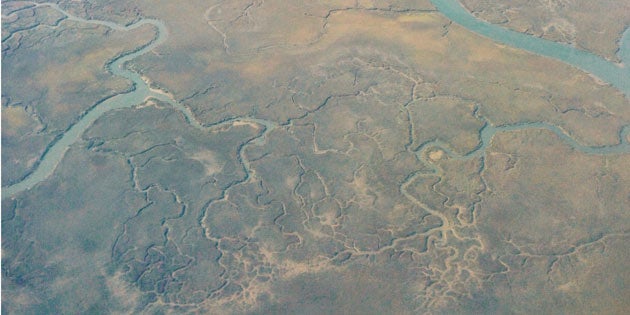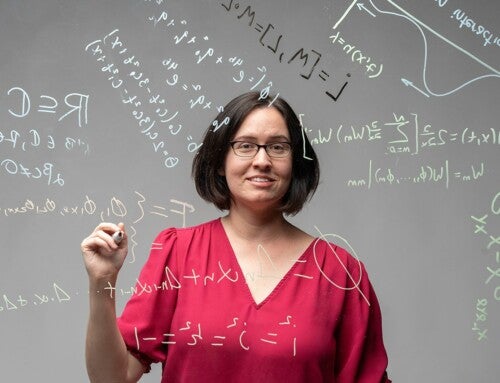When the statistic about how much waste Americans produce each year – approximately 251 million tons – gets thrown around, you might imagine an overflowing trash can, mountainous land fills or litter lining the shoulder of a highway. College of Charleston Assistant Professor of Geology and Environmental Geosciences Barbara Beckingham pictures something much smaller.
RELATED: Learn more about the College’s Geology and Environmental Geosciences programs
Beckingham specializes in microplastics, which are generally defined as small plastic fragments with dimensions that are less than 5 mm. She first became interested in environmental issues while taking geology and environmental sciences courses at her alma mater, Hobart and William Smith Colleges in Geneva, New York. Years later she received her doctorate in environmental engineering from the University of Maryland, Baltimore County, and while she was there Beckingham first became interested in microplastics.
“I was using plastic films as special material for passive sampling of organic chemicals in water and sediment. When I looked down at the littered plastics floating right next to me I made the connection that those plastics, too, were probably harboring contaminants, only no one was coming back in 30 days to collect them,” she said.
Microplastics typically start out as small pellets melted down by manufacturers for consumer goods that unintentionally end up in the environment, or plastic that people discard on city streets and beaches. Sunlight and water eventually break the plastic down until it becomes microscopic and easily edible to aquatic organisms.
Beckingham’s research focuses on microplastics in estuarine environments, like those snaking
along South Carolina’s coast. “Along the way to the sea, plastics can pass through urban or industrialized areas that are also impacted by other types of chemical pollutants,” Beckingham said. “These plastics will pick up the pollutants from their surroundings and ultimately end up in estuaries or other marine environments.”
When marine organisms eat these microplastics, the chemical pollutants from the microplastics are absorbed into the organism’s tissue, such as in the case of the aquatic worms Beckingham examined as part of her research in Maryland’s Chesapeake Bay. “The process of transferring those pollutants from the plastic to the organism depends on the chemical and plastic type, the size of the plastic, and how much time it spends inside the organism’s gut,” she explained. “Thus there are several variables that come into play when determining the risks posed to marine life.”
Beckingham will speak in depth about these variables and potential risks associated with microplastics at a free event for area educators to mark both Earth Science Week and National Chemistry Week on October 18, 2014 from 11 a.m. to 4 p.m. at the School of Sciences and Mathematics Building (202 Calhoun St.). Other event contributors will also address the apparent, significant increase in the amount of microplastic particles present in the ocean’s surface waters and the similar appearance of microplastics to common marine phytoplankton at the base of the food web.
“The event will provide an interdisciplinary look into what microplastics are and how they affect marine environments,” Beckingham said.
She added that there are simple ways the campus community can reduce the amount of microplastic it’s responsible for; “By cutting back on purchasing and using ‘throw away’ plastics, such as plastic bags and bottles, we will reduce the stream of plastic in circulation.” Additionally, Beckingham continued, “If these products are needed, ensure they are disposed of or recycled correctly when finished. And of course, don’t litter! Finally, anyone interested can take direct action by participating in beach sweeps or adopting a roadway or section of a stream to clean up with friends and family to prevent plastic from traveling out of reach.”
“Every person has power through their actions to help limit microplastics in the environment,” she said.
Beckingham is teaching Pollution in the Environment in the fall 2014 semester. For more information on the Earth Science and Chemistry Week microplastics event, contact Cynthia Hall.





